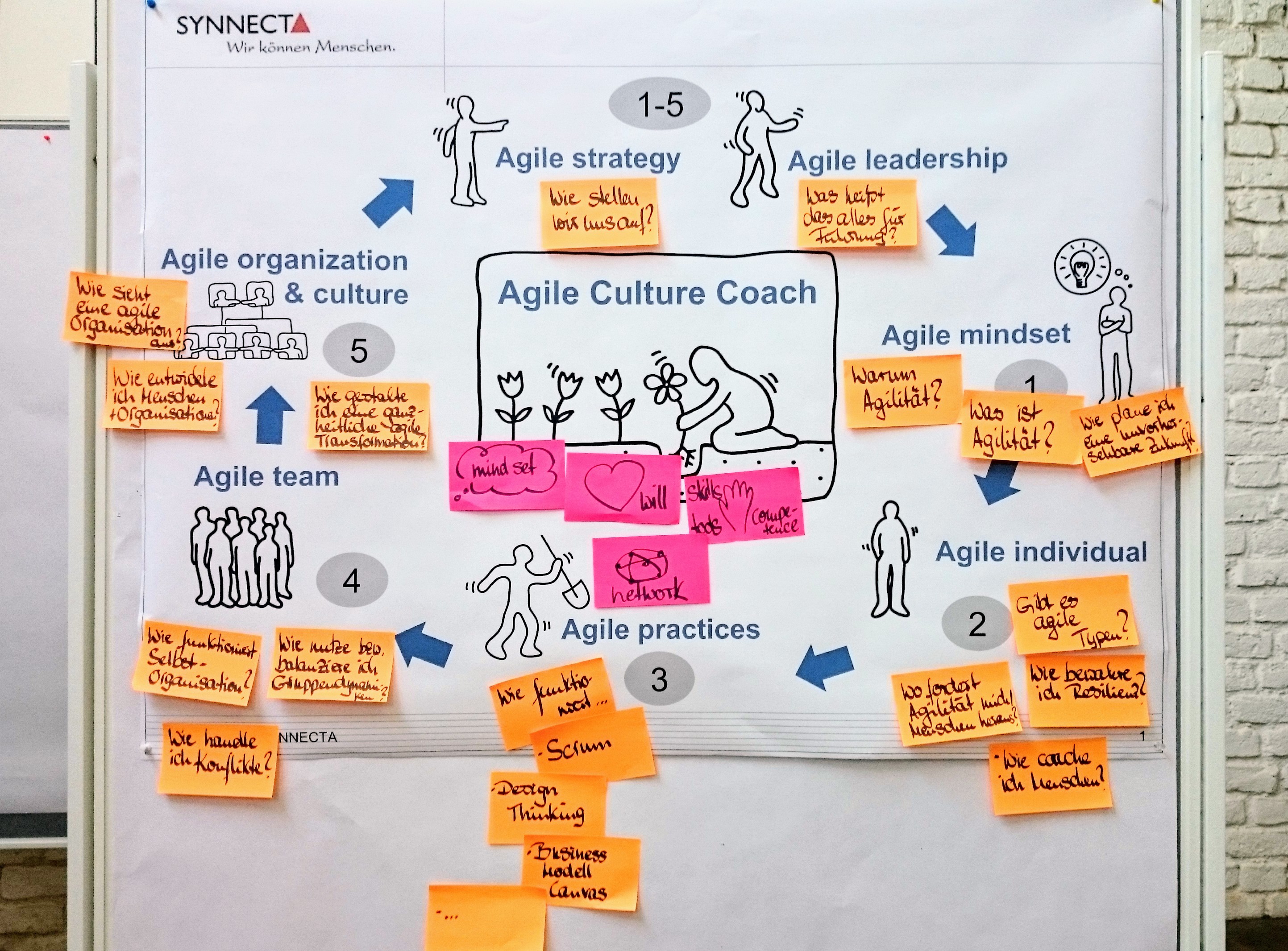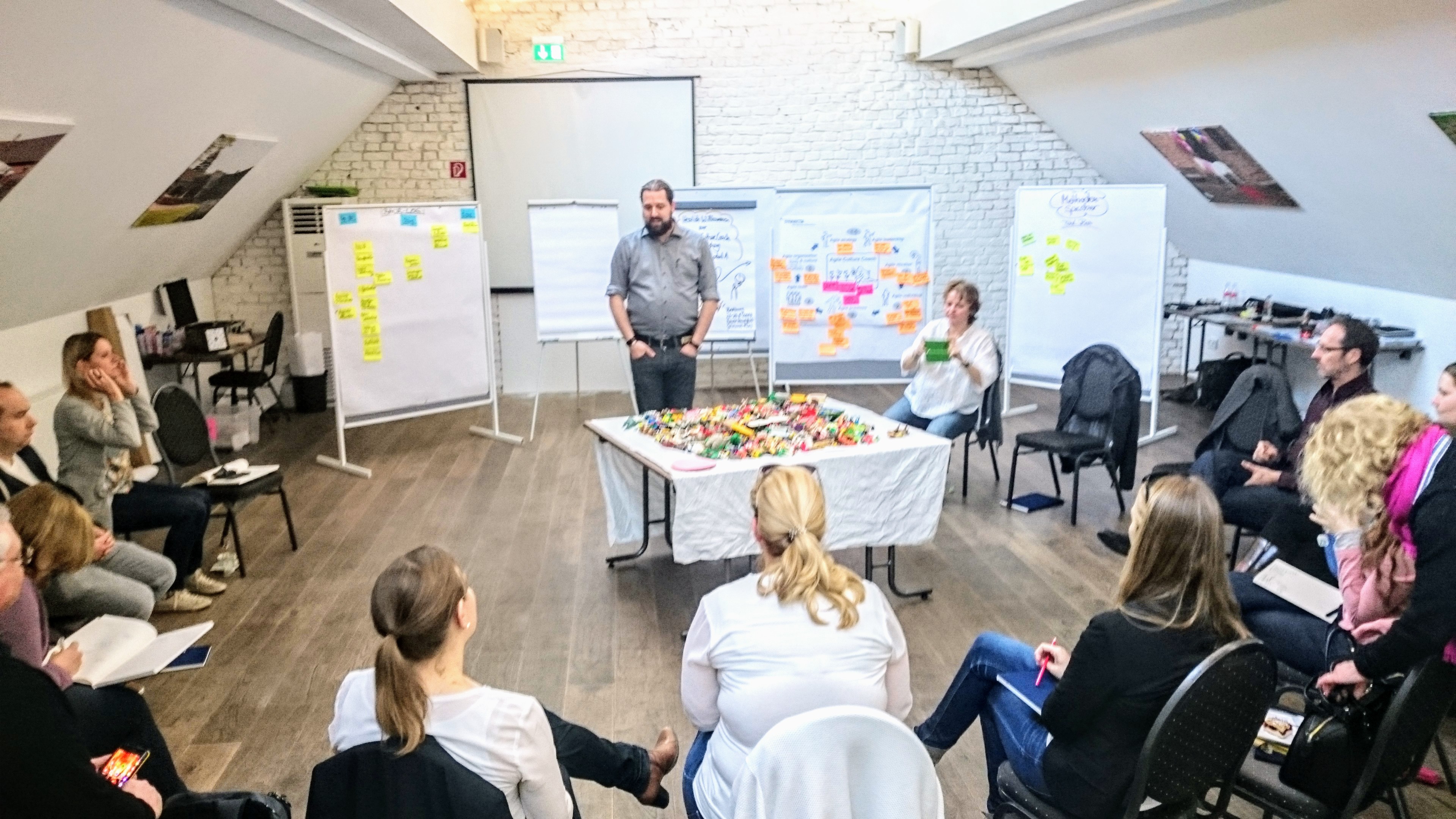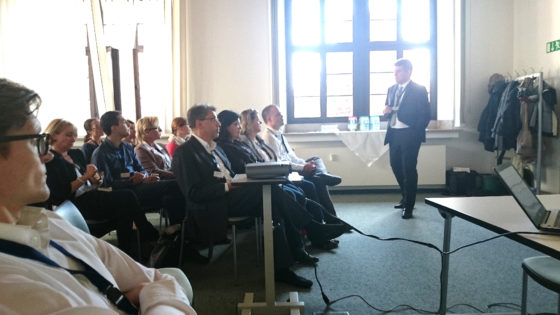by Hans-Peter Sander
“Agility” and “Controlling” – that fits! Did not this year’s Munich “Controller Congress” already postulate it with its title, “Agile Controlling in the digital reality – managing upheavals successfully?” Or maybe it does not fit – as we can hear in some critical discussions again and again…? I received a fantastic offer: deep immersion into the subject with a professional training to the “Agile Culture Coach”! I will report about it in the blog posts.
For a year I will study five modules, each lasting several days: “Agile Leadership and Participation”, “Agility and Personality”, “Agile Methods and Scrum”, “Agile Teams and Conflicts”, “Agile Organization and Culture”. Together with 13 other participants, I will experience this training through SYNNECTA, a consultancy company for organizational development and change management in Cologne. The course is held for the third time, the host calls it with visible pride “the Original”.


“Agile Leadership and Participation”
The first 3-day module is “Agile Leadership and Participation”. An exciting introduction, which is much more than just an orientation, includes also clarification of the concept. “Agile strategy” – how can we pull together? “Agile leadership” – What does it all mean for the leadership? as well as “Agile mindset” – Why agility? What is agility? How can I plan an unpredictable future?
Yes, what is “agility”? There is a widespread understanding. And it is true what the two coaches, Renate Standfest and Dr. Johannes Ries, say: the word “agile” is often used even as an excuse for non-adhered dates and commitments. Convincingly, they make it clear that “beyond the cheap showmanship and bullshit bingo,” there are also “valuable ideas and concepts” in the term that teams, organizations and executives today can make use of – they call this “VUCA situation”.
Our “present time”, characterized by digitization, political upheavals, climate change, etc., is known as the “VUCA world”. It is characterized by “volatility” – instability, rapid, fundamental variability, of “uncertainty” – uncertainty, even unpredictability, “complexity” and “ambiguity” – there are no simple cause-effect connections, so ambiguity dominates. If in this VUCA world “linear methods” do not longer work; what are they then?
“Agility”? – What is this, actually? Our course leaders deny that there is “one, 100%” definition. They refer rather to the “dimensions of agility” and recommend the “Agile Manifesto” as a basis. This “Manifesto for Agile Software Development”, signed by 17 people from the programming environment in 2001, points some aspects described by them:
- They consider “individuals and interactions” more important than processes and tools;
- They put greater emphasis on a “working product” than comprehensive documentation;
- They favor the “collaboration with the customer” much more than any (contract) negotiation;
- They give priority to the “responding to change” instead of just following a plan.
Derived from this Manifesto, the SYNNECTA experts formulate 12 principles: customer satisfaction, openness for change, iterative development, intensive cooperation, focus on a motivating environment, face-to-face communication, working products as a measure of progress, even tempo, technical excellence and good design, simplicity, self-organization and self-reflection. “This collection summarizes well the mindset, which is necessary for the functioning of all agile practices and configurations,” says Ries.
Effectuation: about resources orientation, achievable loss and others
The training is dedicated to agile practices and methods to realize the stated principles. Originating from the software development and developing, comes the “Scrum”. This agile method (discussed thoroughly in Module 3 of the training) attempts to keep the “effort curve” as low as possible.
A very interesting topic in the first module of my Agile Coach training is “Effectuation”. This also involves very practical consequences from the changing world – especially our work world. “Not “either or”, but “both, as well as” dominates,” explains SYNNECTA expert Renate Standfest. “When the future is uncertain, the environment is formable and the goals are negotiable, we have an ideal field for effectuation.” While we are accustomed to “linear-causal processes” of problem solving, we need to make use of circumstances, coincidences and unscheduled opportunities, it is not possible to distinguish between them. I am very interested in the four principles of effectuation:
- Principle of resources orientation: Instead of choosing ways to achieve a previously defined goal, it is necessary to find goals and results that can be achieved with a given set of resources.
- Principle of a achievable loss: the use of the system is based on the achievable loss – and not on the expected yield.
- Principle of circumstances and coincidences: use circumstances, coincidences and unexpectedness as opportunities instead of limiting yourself against it.
- Principle of agreements and partnerships: cooperate with those who are willing to participate.
The module 1 of my Agile Culture Coach training is charged with a lot of highly interesting impulses. I am positive; this fits the controlling world! The offered material: captivating and plentiful for the first three days. I discover a lot of new things: from dimensions and principles of agility over effectuation and fascinating methods like Landscaping, Stacey Matrix, Daily Meetup etc. to playful exercises like the team-forming “Marshmellow Spagetti Contest” or even the very personal introducing of the individual students using Lego and Duplo building blocks. (Picture: “author’s selfie”. How the author “presented” himself to the students.)

(Reports from other modules of the Agile Culture Coach training will follow)



[…] first module 1 of the training, as described in the ICV ControllingBlog, was focused on „Agile Leadership and Participation“, Module 2 – on the […]